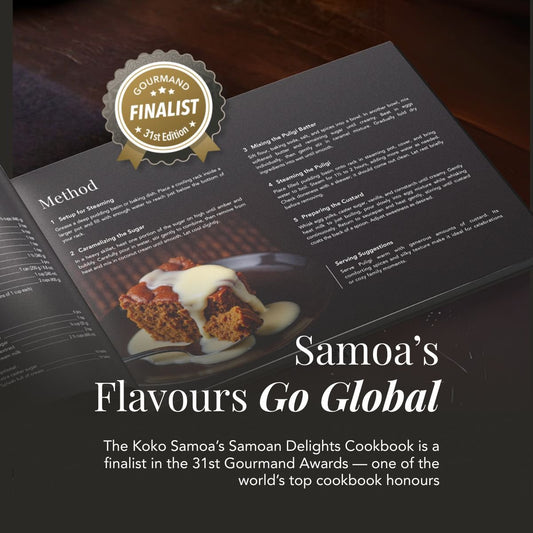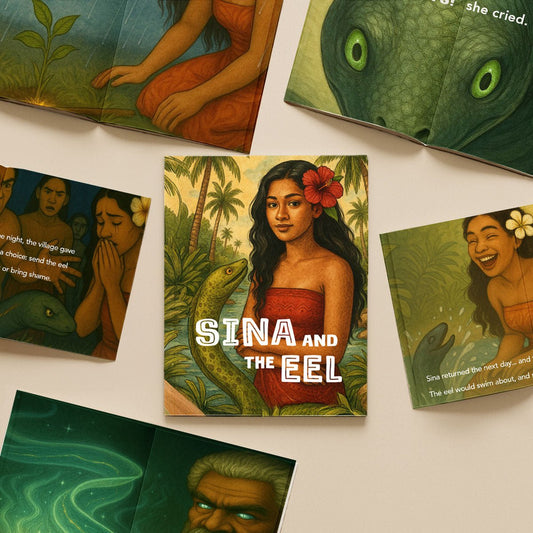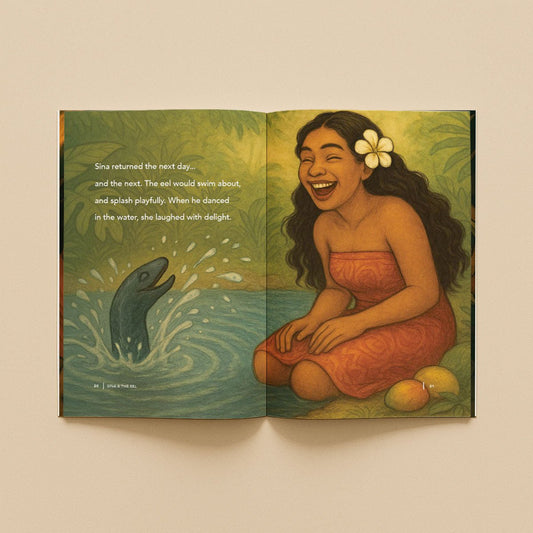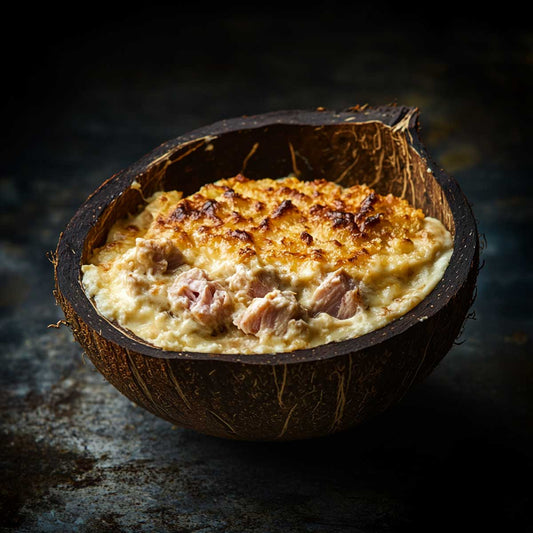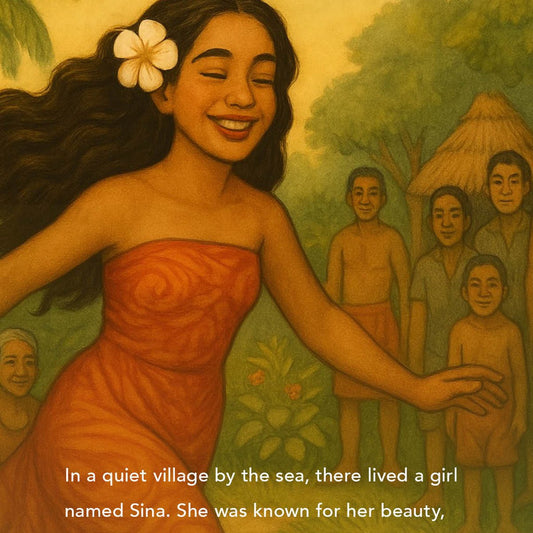How to Say Hello in Samoan: More Than Just a Word, It's Fa'a Sāmoa
If you're planning a trip to the beautiful islands of Sāmoa or American Sāmoa, or simply want to connect with the rich heritage of the Samoan people, knowing how to say hello is the perfect place to start. However, the Samoan language, Gagana Sāmoa, doesn't have a single, direct equivalent for the casual English "hello." Instead, it offers phrases that are steeped in respect, spirituality, and the famous communal way of life known as Fa'a Sāmoa (the Samoan Way).
This comprehensive guide will teach you the most common and appropriate greetings, their correct pronunciation, and the deeper cultural meaning behind them, ensuring you can greet any Samoan with warmth and respect.
The Most Common Samoan Greeting: Tālofa Lava
The phrase you will hear and use most often when greeting people in Sāmoa is Tālofa (pronounced *Tah-loh-fah*), or its more formal and respectful form, Tālofa lava (pronounced *Tah-loh-fah lah-vah*).
What Does Tālofa Lava Mean?
While often translated simply as "hello," the literal meaning is deeper and carries a blessing. The word comes from two parts:
- Tālofa: A contraction of *tā* (meaning "we" or "us") and *alofa* (meaning "love," "compassion," or "pity"). A literal interpretation suggests "a showing of love/compassion to us."
- Lava: An intensifying particle that means "very much," "completely," or "indeed."
Therefore, Tālofa lava is a profound way of greeting, essentially conveying a heartfelt "A truly loving greeting to you" or "Greetings with all my love." It is the universally accepted, respectful, and friendly way to say hello to anyone, from a single person to a group.
How to Use Tālofa Lava
Use Tālofa lava when:
- Entering a village or a home.
- Greeting a matai (chief) or an elder.
- Starting a conversation with a stranger.
Pronunciation Tip: The line over the 'a' in *Tālofa* (called a macron) indicates a long vowel sound, so it's *Tah-loh-fah*, not a quick *Talofa*.
Greetings Based on Time of Day
Just like in English, Gagana Sāmoa offers specific greetings to acknowledge the time of day. These are often used in more formal settings, such as public gatherings, church services, or announcements, but are good phrases to know for everyday courtesy.
Good Morning in Samoan
The standard phrase for "Good morning" is:
Manuia le taeao (pronounced *Mah-noo-ee-ah leh tie-ow*)
- Manuia: Means "blessed," "happy," or "success."
- Le taeao: Means "the morning."
Meaning: "May your morning be blessed/happy." This is an excellent, polite way to start your day's interactions.
Good Day in Samoan
For a general "Good day," or when greeting someone in the middle of the day:
Manuia le aso (pronounced *Mah-noo-ee-ah leh ah-soh*)
- Le aso: Means "the day."
Meaning: "May your day be blessed/happy."
Good Evening/Night in Samoan
When the sun begins to set, the appropriate greeting is:
Manuia le afiafi (pronounced *Mah-noo-ee-ah leh ah-fee-ah-fee*)
- Le afiafi: Means "the evening."
Meaning: "May your evening be blessed/happy." Note that for saying "good night" when retiring to bed, a different phrase, *Tōfā soifua*, is used (see below).
Formalities and Respect: The Heart of Fa'a Sāmoa
Samoan culture places immense value on respect, courtesy, and hierarchy. The way you greet an elder, a chief, or a group is crucial. Knowing a few extra words can show a deep appreciation for the Fa'a Sāmoa and open doors in the community.
Addressing a Chief (Matai)
The greeting Tālofa lava is perfectly acceptable, but when addressing a matai (chief) directly, a deep bow of the head and a low voice are essential non-verbal cues. If you know their title, it is always best to use it.
Greeting a Group of People
If you walk into a meeting or a fale (traditional house) where many people are gathered, you can use:
Tālofa outou uma (pronounced *Tah-loh-fah oh-too oo-mah*)
- Outou: Is the plural pronoun for "you."
- Uma: Means "all."
Meaning: "A loving greeting to all of you." This is a comprehensive and polite way to greet everyone in a group setting simultaneously.
Non-Verbal Greetings: The Silent Language of Sāmoa
In Samoan culture, non-verbal communication is just as important as the words themselves. A respectful greeting involves your entire demeanor.
The Eye-Brow Flash and Nod
In less formal, passing situations—such as walking past someone on the road or briefly catching an eye in a market—a simple greeting often involves:
- A quick nod of the head.
- A subtle raising of the eyebrows (the "eyebrow flash") combined with a slight smile.
This is a quiet, friendly acknowledgment that shows respect and recognition without requiring a verbal exchange that might interrupt work or travel.
The Handshake and the Kiss
Among friends and family, the greeting can be more physical and affectionate:
- Handshake: A firm, friendly handshake is common upon meeting and parting, especially between men.
- Kiss/Hug: Close family and friends will often greet each other with a brief hug and sometimes a gentle cheek-to-cheek kiss or a sniff (a traditional Polynesian greeting).
Respectful Posture: When passing through a village, especially if people are gathered or an elder is sitting, it is respectful to lower your head slightly and even tuck your hands behind your back, showing you mean no offense or disruption.
Beyond Hello: Essential Conversational Phrases
After a respectful Tālofa lava, you can continue the conversation with a few more key phrases.
How Are You?
The Samoan equivalent of "How are you?" is:
O ā mai oe? (pronounced *Oh ah my oh-eh*)
- O ā mai: Means "How are things?" or "How is it?"
- Oe: Means "you."
The correct, polite response is often:
O a'u lea, fa'afetai. Ae o oe? (pronounced *Oh ow lay-ah, fah-ah-feh-tie. Eye oh oh-eh?*)
- O a'u lea: Means "I'm fine" (literally, "It is me").
- Fa'afetai: Means "thank you."
- Ae o oe?: Means "And you?"
Saying Goodbye in Samoan
The most important phrase for parting ways is:
Tōfā soifua (pronounced *Toe-fah soy-foo-ah*)
- Tōfā: Means "farewell."
- Soifua: Means "long life" or "good health."
Meaning: "Farewell, live well/be healthy." It is a beautiful, deeply caring farewell that wishes the other person longevity and wellness. You can use a shortened Tōfā informally among friends.
The Spiritual Element: Why Aloha and Tālofa are Similar
The deep meaning in Tālofa lava is mirrored in other Polynesian languages, reflecting a shared ancestral heritage.
- Hawaiian *Aloha*: The root *alofa* in Samoan is the same as *aloha* in Hawaiian and *aroha* in Māori. In all these cultures, the word is not just a greeting but an embodiment of love, peace, and mutual respect.
- The Austronesian Connection: This linguistic link traces back to the ancient seafaring peoples of the Lapita culture, the ancestors of the Samoans, who carried this concept of greeting with love and well-wishes across the vast Pacific Ocean.
When you say Tālofa lava, you are participating in a tradition that is thousands of years old, connecting you to the heart of the Polynesian world. It’s a recognition of the shared humanity and spirit (*vā* or *mana*) between two people.
Summary of Samoan Greetings
To ensure you have the most useful phrases ready, here is a quick reference table:
| English Meaning | Samoan Phrase | Pronunciation (Approximation) | Context |
|---|---|---|---|
| Hello (Formal/Respectful) | Tālofa lava | *Tah-loh-fah lah-vah* | Universal, most appropriate greeting. |
| Hello (Informal) | Tālofa | *Tah-loh-fah* | Casual and friendly. |
| Good Morning | Manuia le taeao | *Mah-noo-ee-ah leh tie-ow* | Used from dawn until noon. |
| Good Evening | Manuia le afiafi | *Mah-noo-ee-ah leh ah-fee-ah-fee* | Used from late afternoon onward. |
| How Are You? | O ā mai oe? | *Oh ah my oh-eh* | Polite follow-up after Tālofa. |
| Goodbye (Formal/Wishing Health) | Tōfā soifua | *Toe-fah soy-foo-ah* | Most common and respectful way to part. |
Putting It All Together: A Simple Exchange
Imagine you are meeting a new friend in Apia, Sāmoa:
You: "Tālofa lava."
Samoan Friend: "Tālofa lava. O ā mai oe?"
You: "O a'u lea, fa'afetai. Ae o oe?"
Samoan Friend: "O a'u fo'i lea." (I am also well.)
Mastering these few phrases demonstrates respect for the ancient culture and the language. It transforms a simple greeting into a true connection, embodying the spirit of alofa (love) and the essence of the Samoan Way.
The Samoan language and culture are beautiful and deep. Bring a piece of the Fa'a Sāmoa spirit into your own life with products that honor this heritage. Browse our collection of authentic Samoan heritage products today.






